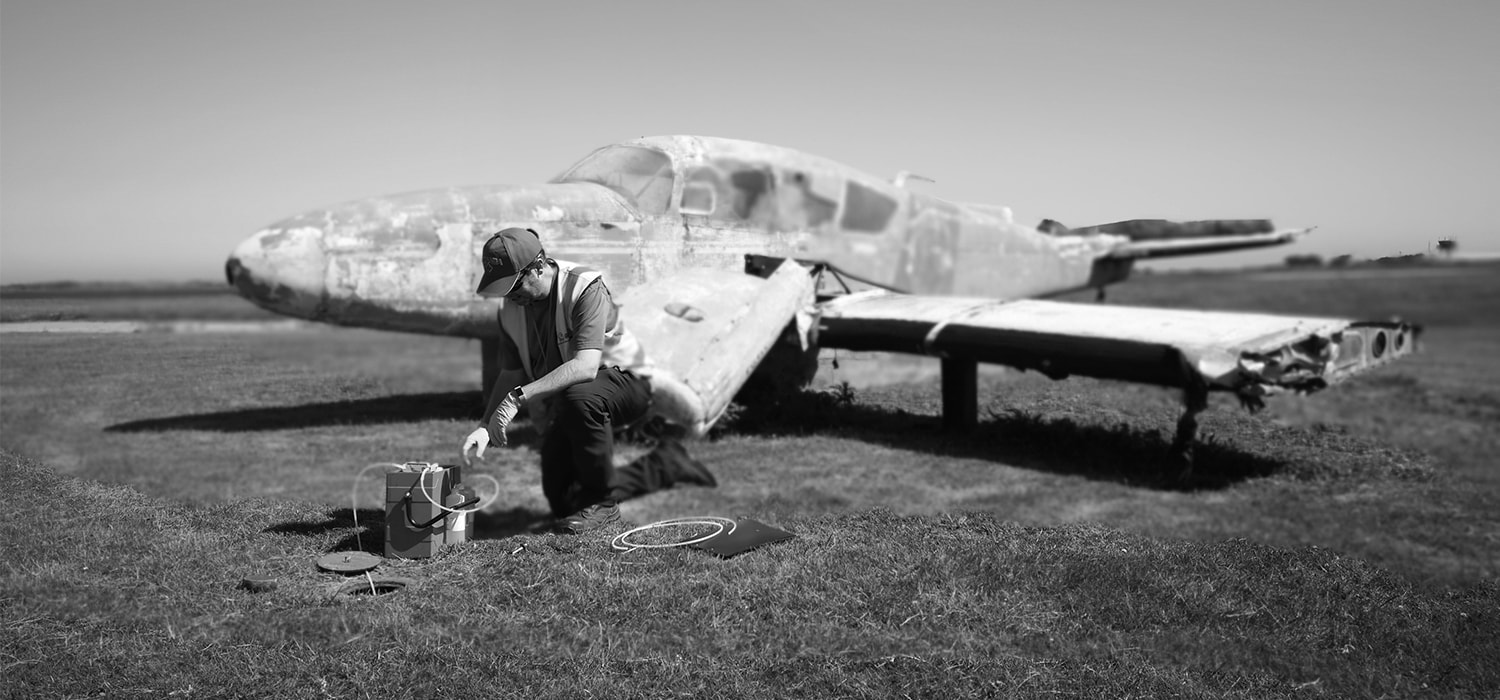Table of Contents
The challenge
When toxic PFAS were identified in the surface waters that supply the island's drinking water, Guernsey Airport needed help to investigate possible sources of contamination.
1
Two seemingly unrelated things happened in the 1930s: Guernsey Airport celebrated its grand unveiling, and poly and perfluoroalkyl substances (PFAS) were invented. And while both were deemed a positive progression, the latter has since proven otherwise. PFAS—a group of chemicals first developed for use in textile coatings, non-stick cookware, electronics and firefighting foams—are now responsible for large-scale environmental contamination.
When PFAS were identified in the surface waters that supply the island's drinking water reservoir, Guernsey Airport needed help to investigate the issue. Its grounds were suspected to have been affected by using firefighting foams during training and incident response, and immediate action was needed to safeguard Guernsey's drinking water reserves.
The solution
Arcadis was commissioned to assess soil, groundwater and surface waters, implement interim emergency response measures, and design and develop a custom PFAS water treatment system.
20 liters
It was important to establish whether the specific PFAS identified in Guernsey’s surface waters were indeed due to the airport using firefighting foams that contained the chemical. Arcadis was commissioned to investigate and assess soil, groundwater and surface waters and, fortunately, we have specific expertise in dealing with PFAS. It meant that we could implement interim emergency response measures, while designing and developing a that would help to clean up supply.
As part of our initial investigation, we identified seven main areas of the airport that had been impacted by PFAS. Four of these needed immediate attention, so we started remediation straight away. This process included removing 15,000 tons of impacted soil, which continued to act as a PFAS source by leeching into the local water environment.
-
READ MORE
We simultaneously designed a water treatment system that would remove any remaining PFAS that posed a risk to Guernsey’s wider water supply. It uses granulated activated carbon, which works by capturing and treating groundwater and surface water before it reaches the island's drinking water reservoir.
Despite the challenges that come with dealing with a highly complex contaminant in an active airport, this PFAS contamination treatment system was fully installed in as little as nine months. The treatment, known locally as the GWIS (Groundwater Improvement System) can treat up to 20 liters of water per second. Its usage has ensured that concentrations of PFAS in the island's drinking waters are now well below current UK drinking water criteria.

The impact
PFAS can be bioaccumulative, so it was vital to reduce concentrations to well below current UK drinking water criteria to help keep the people of Guernsey safe.
15,000 tons
Finding a practical, effective and cost-efficient solution to manage and mitigate the impacts of contamination was crucial. The highly mobile nature of PFAS in water, their resistance to biodegradation and their bioaccumulative properties—meaning they build up in living organisms, including humans—were our key drivers for action. By implementing GWIS, the people of Guernsey are now ensured.
Get trusted advice on PFAS management
Our specialists can help you navigate regulatory complexities, mitigate risks and implement sustainable remediation strategies that are tailored to your operational needs.






